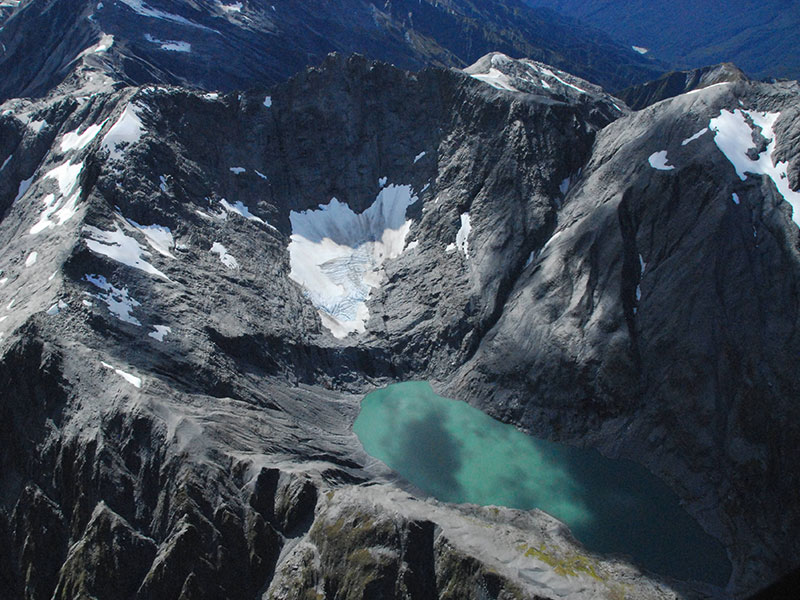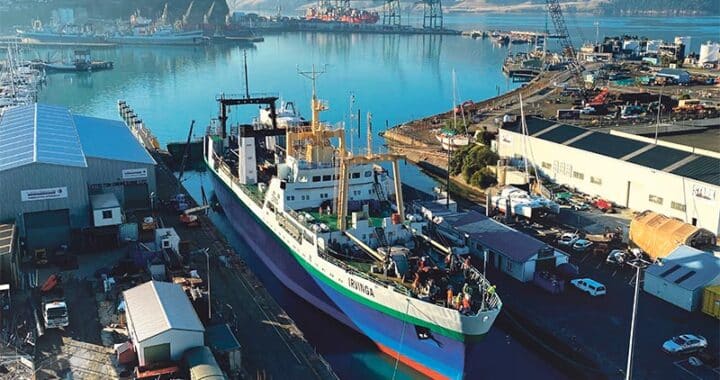NIWA: Glaciers continue to shrink this year
3 min read
NIWA scientists predict that in a decade, many of NZ’s important glaciers will be gone. Photo: Gregor Macara
The annual end-of-summer snowline survey of more than 50 South Island glaciers has revealed continued loss of snow and ice, National Institute of Water and Atmospheric Research (NIWA) says.
NIWA principal scientist Dr Andrew Lorrey, who leads the project, says that many of New Zealand’s glaciers are suffering due to exceedingly warm summer temperatures, exacerbated by a marine heatwave.
“We were expecting the snowlines to be high because of the warm weather we’ve had, and sadly, our instincts were confirmed. A couple of glaciers, such as Brewster, had snowlines at least as high as in 2016, which was in our top five high snowline years. The surface of the Volta Glacier also showed a lot of snow and ice accumulation layers from prior years, meaning it’s probably a bad year when we can see all those ‘book pages’ from the past being exposed,” said Dr Lorrey.
Each year, the NIWA monitoring programme evaluates many glaciers and the altitude of the snowline to see how much of the previous winter’s snow has remained covering each glacier. The long-term aerial survey, stretching back to 1977, shows how much glaciers have retreated. Since the snowline survey began, the global climate has warmed by around 1.1°C.
Glacier snowline altitudes, also known as equilibrium line altitudes (ELAs), help scientists to directly evaluate annual glacier health. If a glacier has decreased in size, the ELA is higher because less winter snow remains. If the glacier increases, the ELA is lower because more winter snow has remained.

Dr Lauren Vargo from Victoria University of Wellington says the retreat is due to the majority of New Zealand’s glaciers losing mass most years over the past decade.
“From what we saw on the snowline survey, most glaciers had reasonably high snowlines, showing that they lost mass this year. But what was more striking to me is how much smaller and more skeletal so many of the glaciers are becoming.”
NIWA climate scientist Gregor Macara says there was a noticeable difference in this years’ survey.
“Based on what I saw during the 2022 survey, it looks like our glaciers have struggled compared to last year. The snowline elevations this year were high, meaning much of the winter snow had melted, leaving a lot of glacial ice exposed. It appears to be yet another poor year for our ice, continuing the trend from recent years, and it is disheartening to see the ongoing decline in extent of the glaciers we monitor.”
NIWA’s work estimates that more than a third of the ice volume has been lost from the Southern Alps since the survey began.
“What we’re seeing is a clear retreat, which is no doubt thanks to climate change. In a decade, we predict that many of our beloved and important glaciers will be gone. This will have far-reaching impacts, such as altering our beautiful landscape, affecting the livelihoods of people who rely on these natural wonders for tourism, and flow-on effects from decreased meltwater during periods of drought. It also emphasises the urgency of slowing climate change because the impacts are going to become increasingly costly and hard to avoid,” said Dr Lorrey.
The scientific results from this year’s survey will be known later this year.



